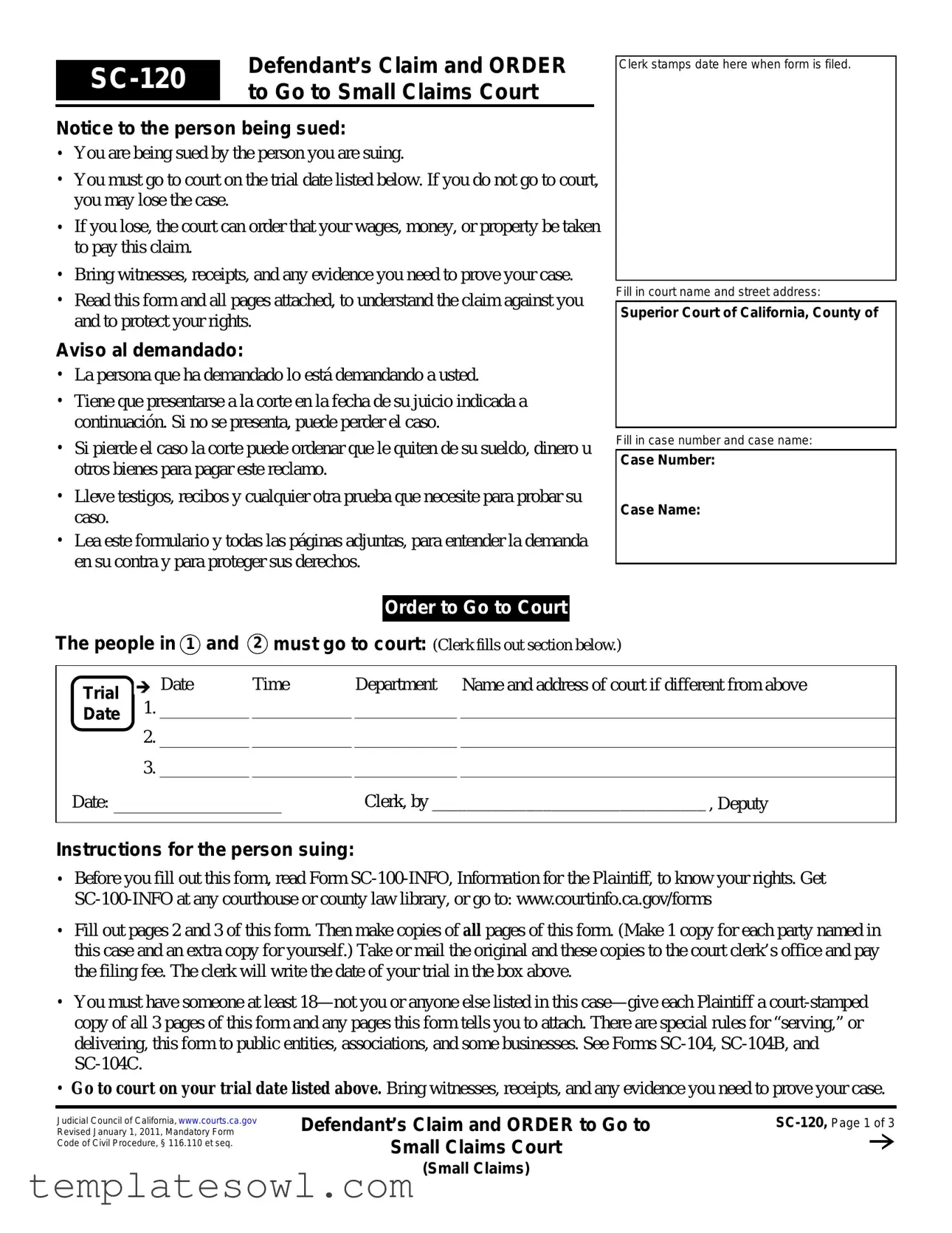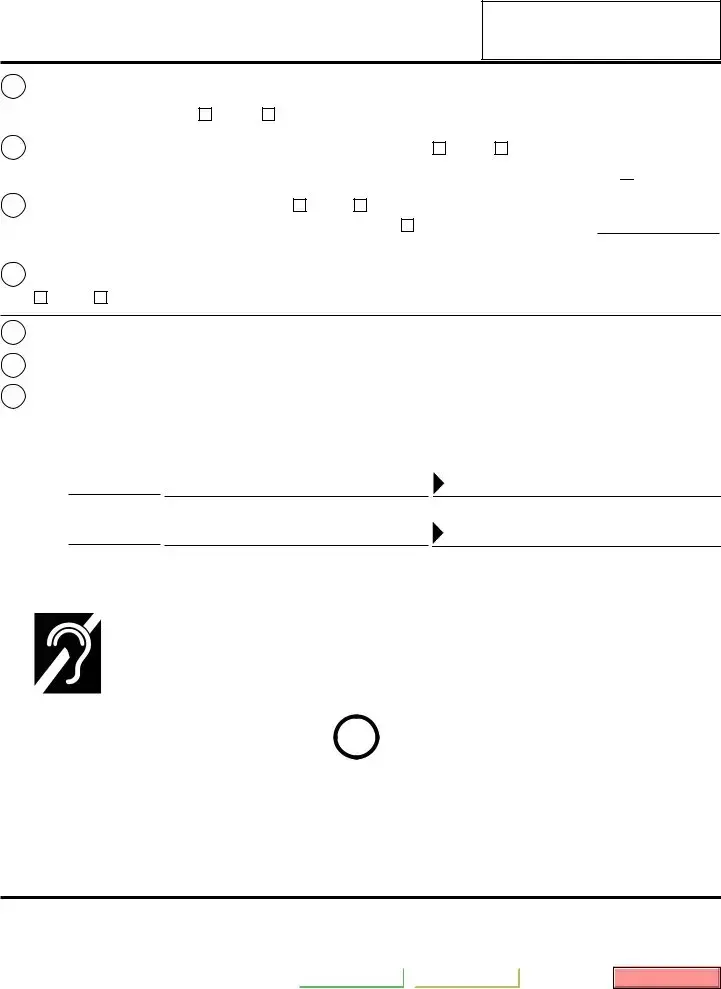What is the SC-120 form?
The SC-120 form, also known as the Defendant’s Claim and ORDER to Go to Small Claims Court, is a legal document used in California small claims court. This form is filled out by the defendant to assert their claims against the plaintiff. It outlines the details of the case, the reasons for the claim, and the amount owed. This form is essential for defendants who wish to counter a lawsuit and seek their own claim in small claims court.
What should I do after completing the SC-120 form?
After filling out the SC-120 form, make sure to make copies of all pages—one for each party involved in the case and an extra for yourself. You must then submit the original and these copies to the court clerk’s office, accompanied by the required filing fee. The court clerk will provide you with the trial date, which must be adhered to in order to avoid losing the case by default.
What if I do not go to court on the trial date?
If you fail to attend court on the designated trial date, you risk losing the case. The court may rule in favor of the plaintiff, which means the court can authorize the seizure of your wages, money, or property to satisfy the claim. It is critical to make arrangements to attend court, regardless of your feelings about the case.
What types of evidence should I bring to court?
Prepare to present all relevant evidence that supports your case. This may include witnesses who can testify on your behalf, receipts that prove transactions or agreements, and any other documentation that supports your assertion of the debt or claim. Having organized evidence helps in presenting a strong case and bolsters your argument.
Can I appeal the decision made in small claims court?
In California small claims court, you cannot appeal the ruling if you lose your case. The decision reached by the judge is final. Therefore, it is important to understand your position and prepare your case thoroughly before the trial. If you feel the need for further legal recourse, consult with a legal professional for guidance on potential alternative actions.
How can I get help with the SC-120 form?
If you need assistance filling out the SC-120 form or understanding the process, your county’s Small Claims Advisor is available to help at no cost. You can also find specific information on small claims procedures and resources online at the California court's official website. Accessing these resources will provide you greater clarity and guidance regarding your rights and responsibilities.




